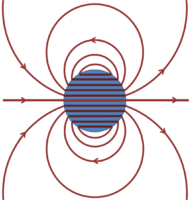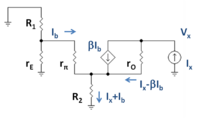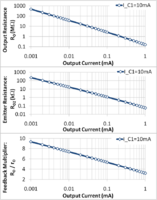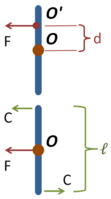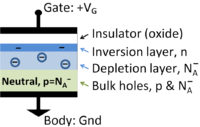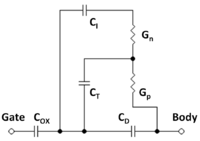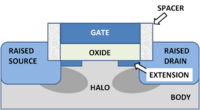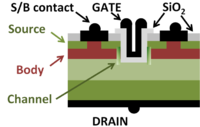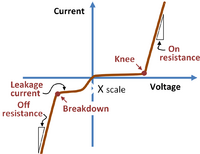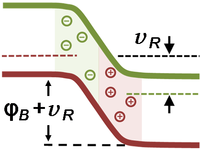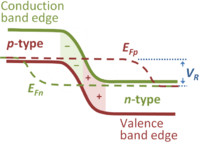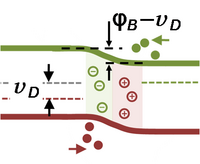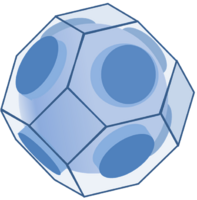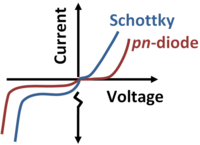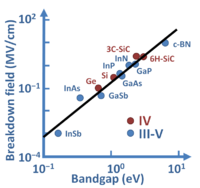imported>John R. Brews |
imported>John R. Brews |
| Line 3: |
Line 3: |
| *[[User:John R. Brews/Sample|'''Sample''']] | | *[[User:John R. Brews/Sample|'''Sample''']] |
| *[[User:John R. Brews/WP Import|'''WP Import''']] | | *[[User:John R. Brews/WP Import|'''WP Import''']] |
| | *[[User:John_R._Brews/Draft|'''Centrifugal force''']] |
| | *[[User:John_R._Brews/Draft|'''Centripetal force''']] |
|
| |
|
| I am a Professor Emeritus of Electrical Engineering from The University of Arizona, where I taught device physics and circuit design for just under two decades. Previously, I was a research scientist for twenty-odd years at Bell Laboratories, Murray Hill, doing theoretical work in the areas of solid-state physics and device physics. I also am a Fellow of the IEEE, and a recipient of the Electron Device Society distinguished service award for work as Editor-in-chief of the journal IEEE Electron Device Letters, founded by Nobel prize winner George E. Smith. I've published a number of technical books and papers, some of which may be found at [http://scholar.google.com/scholar?as_q=&num=10&btnG=Search+Scholar&as_epq=&as_oq=&as_eq=&as_occt=any&as_sauthors=%22J+R+Brews%22&as_publication=&as_ylo=&as_yhi=&as_sdt=1.&as_sdtp=on&as_sdts=29&hl=en this link]. | | I am a Professor Emeritus of Electrical Engineering from The University of Arizona, where I taught device physics and circuit design for just under two decades. Previously, I was a research scientist for twenty-odd years at Bell Laboratories, Murray Hill, doing theoretical work in the areas of solid-state physics and device physics. I also am a Fellow of the IEEE, and a recipient of the Electron Device Society distinguished service award for work as Editor-in-chief of the journal IEEE Electron Device Letters, founded by Nobel prize winner George E. Smith. I've published a number of technical books and papers, some of which may be found at [http://scholar.google.com/scholar?as_q=&num=10&btnG=Search+Scholar&as_epq=&as_oq=&as_eq=&as_occt=any&as_sauthors=%22J+R+Brews%22&as_publication=&as_ylo=&as_yhi=&as_sdt=1.&as_sdtp=on&as_sdts=29&hl=en this link]. |
Revision as of 15:41, 13 February 2011
I am a Professor Emeritus of Electrical Engineering from The University of Arizona, where I taught device physics and circuit design for just under two decades. Previously, I was a research scientist for twenty-odd years at Bell Laboratories, Murray Hill, doing theoretical work in the areas of solid-state physics and device physics. I also am a Fellow of the IEEE, and a recipient of the Electron Device Society distinguished service award for work as Editor-in-chief of the journal IEEE Electron Device Letters, founded by Nobel prize winner George E. Smith. I've published a number of technical books and papers, some of which may be found at this link.
Images
| Magnetism
|
|
|
(CC) Image: John R. Brews
|
B-field lines near uniformly magnetized sphere
|
|
|
(CC) Image: John R. Brews
|
Magnetic flux density vs. magnetic field in steel and iron
|
|
| Widlar current source
|
|
|
(CC) Image: John R. Brews
|
Widlar current source using bipolar transistors
|
|
|
(CC) Image: John R. Brews
|
Small-signal circuit for finding output resistance of the Widlar source
|
|
|
(CC) Image: John R. Brews
|
Design trade-off between output resistance and output current in Widlar source
|
|
| Forces
|
|
|
(CC) Image: John R. Brews
|
Force and its equivalent force and couple
|
|
| Electromagnetism
|
|
|
(CC) Image: John R. Brews
|
|
|
|
| Devices
|
|
|
(PD) Image: John R. Brews
|
Cross section of MOS capacitor showing charge layers
|
|
|
(PD) Image: John R. Brews
|
Three types of MOS capacitance vs. voltage curves. VTH = threshold, VFB = flatbands
|
|
|
(PD) Image: John R. Brews
|
Small-signal equivalent circuit of the MOS capacitor in inversion with a single trap level
|
|
|
(PD) Image: John R. Brews
|
A modern MOSFET
|
|
|
(PD) Image: John R. Brews
|
A power MOSFET; source and body share a contact.
|
|
|
(CC) Image: John R. Brews
|
Calculated density of states for crystalline silicon.
|
|
|
(CC) Image: John R. Brews
|
Field effect: At a gate voltage above threshold a surface inversion layer of electrons forms at a semiconductor surface.
|
|
|
(PD) Image: John R. Brews
|
Occupancy comparison between n-type, intrinsic and p-type semiconductors.
|
|
|
(PD) Image: John R. Brews
|
Nonideal pn-diode current-voltage characteristics
|
|
|
(PD) Image: John R. Brews
|
Band-bending diagram for pn-junction diode at zero applied voltage
|
|
|
(PD) Image: John R. Brews
|
Band-bending for pn-diode in reverse bias
|
|
|
(PD) Image: John R. Brews
|
Quasi-Fermi levels in reverse-biased pn-junction diode
|
|
|
(PD) Image: John R. Brews
|
Band-bending diagram for pn-diode in forward bias
|
|
|
(PD) Image: John R. Brews
|
Fermi occupancy function vs. energy departure from Fermi level in volts for three temperatures
|
|
|
(PD) Image: John R. Brews
|
Fermi surface in k-space for a nearly filled band in the face-centered cubic lattice
|
|
|
(PD) Image: John R. Brews
|
A constant energy surface in the silicon conduction band consists of six ellipsoids.
|
|
|
(PD) Image: John R. Brews
|
Planar Schottky diode with n+-guard rings and tapered oxide.
|
|
|
(PD) Image: John R. Brews
|
Comparison of Schottky and pn-diode current voltage curves.
|
|
|
(PD) Image: John R. Brews
|
Schottky barrier formation on p-type semiconductor. Energies are in eV.
|
|
|
(PD) Image: John R. Brews
|
Schottky diode under forward bias VF.
|
|
|
(PD) Image: John R. Brews
|
Schottky diode under reverse bias VR.
|
|
|
(PD) Image: John R. Brews
|
Critical electric field for breakdown versus bandgap energy in several materials.
|
|
|
(PD) Image: John R. Brews
|
Schottky barrier height vs. metal electronegativity for some selected metals on n-type silicon.
|
|
